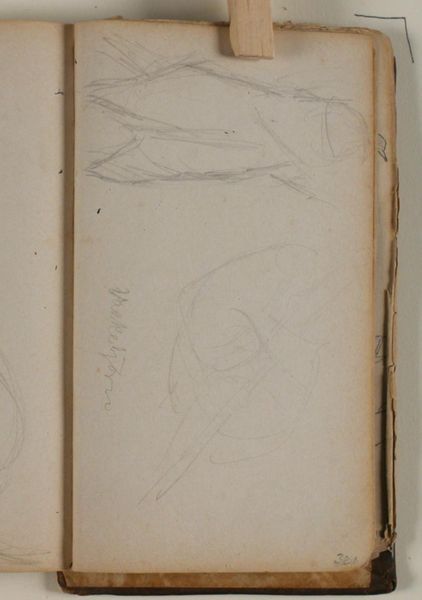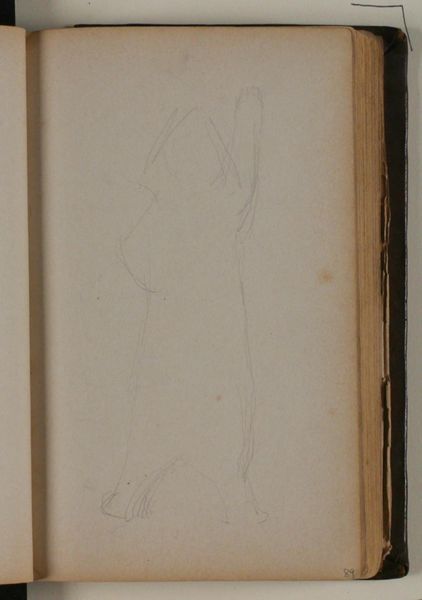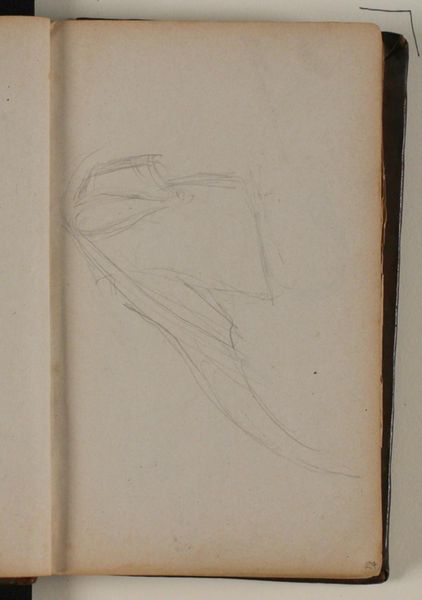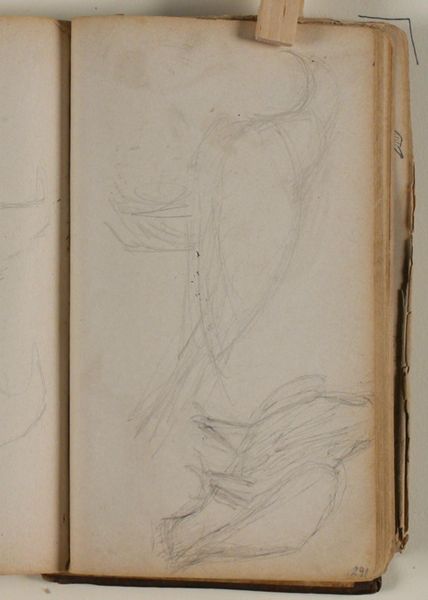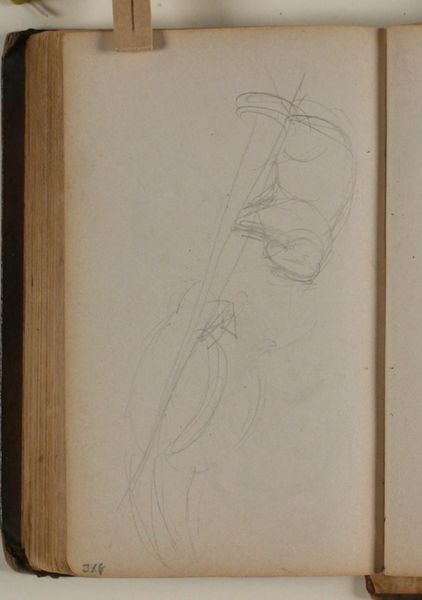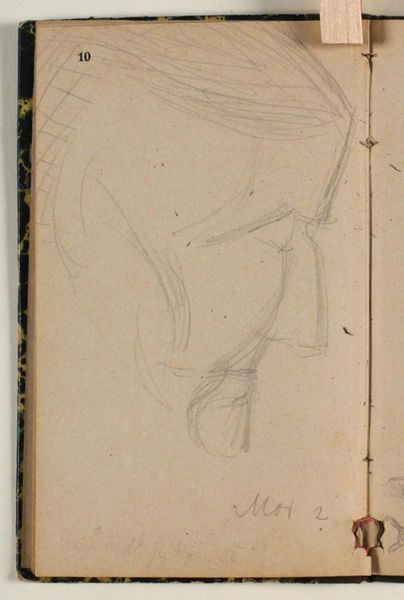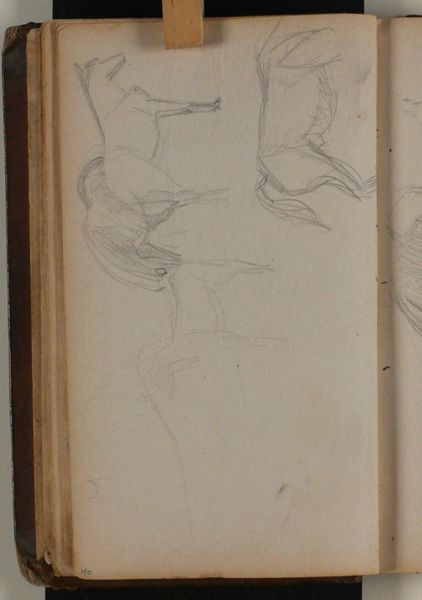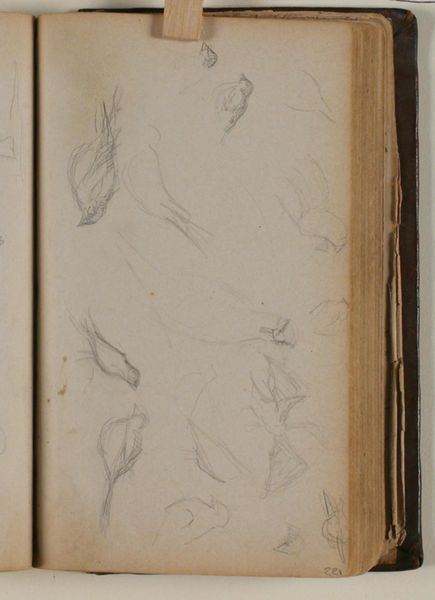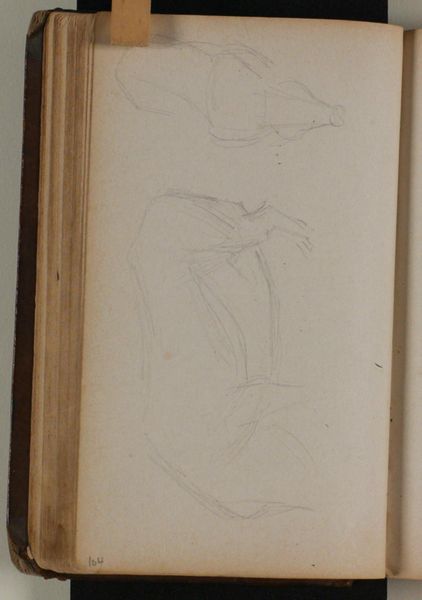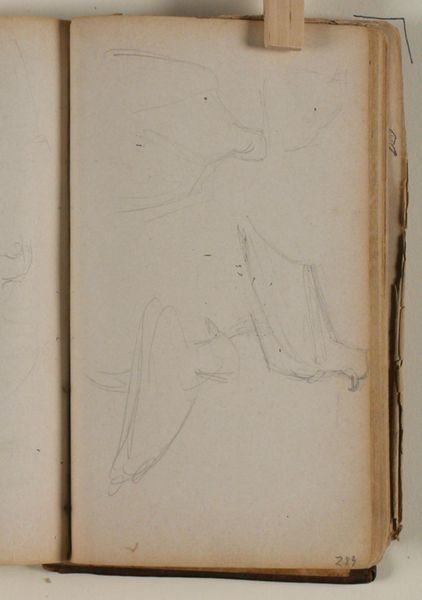
drawing, pencil
#
drawing
#
pencil
Dimensions: 162 mm (height) x 98 mm (width) x 23 mm (depth) (monteringsmaal)
Curator: Here, we see "Gående isbjørn," or "Walking Polar Bear," a pencil drawing by Niels Larsen Stevns created sometime between 1864 and 1941, now held in the collection of the SMK, Statens Museum for Kunst. Editor: My first impression? It's tentative, ephemeral, almost a ghost of a polar bear. I sense the vulnerability of the animal rendered in these faint lines. Curator: Interesting. Consider how polar bear imagery shifted historically. Previously a symbol of untamed Arctic power, later representations often depict them as victims of environmental change. I wonder if Stevns' sketch captures that shift, a foreshadowing of their precarious future. Editor: I agree that we can examine Stevns' artistic expression in relation to how society, at large, understands climate change. However, I believe we need to go further; it's not merely an aesthetic commentary on nature but, in my opinion, it is connected to themes of isolation and survival. Curator: True, survival certainly resonates here, especially considering Stevns' biography and artistic struggles. He faced periods of obscurity and financial hardship. The polar bear, a creature facing its own set of challenges in a harsh environment, might reflect Stevns' anxieties regarding his place in the art world. Editor: Exactly, his life provides valuable context. Thinking of art as an advocacy tool; could we perceive this quick study as a reflection on the state of the human, but told through a portrait of an animal on the verge? It certainly emphasizes fragility. Curator: It brings to light how museums contextualize nature through their exhibition choices. Even a sketch like this provokes considerations of both environmental and personal histories. Editor: This perspective reminds me that these institutional spaces hold the power to initiate conversations that weave narratives across identities and experiences. Curator: It truly demonstrates the profound ways in which art serves not only as reflection but also as catalyst for dialogue, helping us examine intricate power dynamics across time. Editor: Absolutely, this artwork prompts a deeper exploration of the intersectional narratives embedded within its delicate lines.
Comments
No comments
Be the first to comment and join the conversation on the ultimate creative platform.
